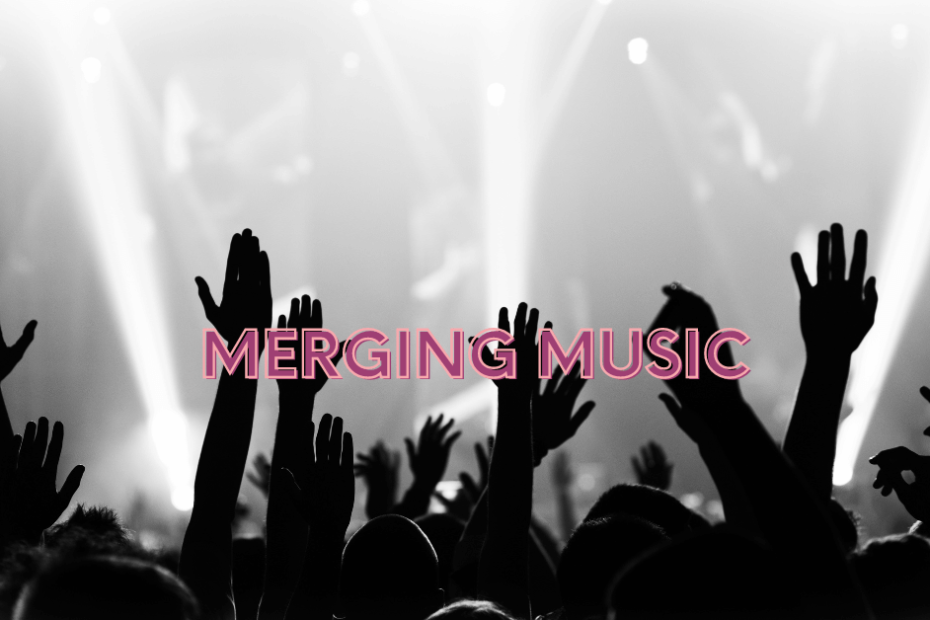Welcome to a sonic journey through the digital labyrinth of today’s most disruptive technologies—Web 3, the Metaverse, NFTs, and blockchain. As we teeter on the edge of a new era, it’s crucial to understand how these technologies are not just reshaping our digital experiences, but also redefining the very structure of the music industry. From empowering artists to fundamentally altering how fans engage with music, the transformation is as revolutionary as the transition from vinyl to digital. Buckle up as we delve deep into how the music industry is undergoing a dramatic digital transformation right before our eyes.
Web 3 and Music: A New Digital Frontier
Before we dive into the nitty-gritty, let’s demystify Web 3. At its core, Web 3 is a decentralized version of the internet that aims to give power back to users. Unlike the current internet landscape, where a few centralized entities like social media giants and streaming platforms hold significant control, Web 3 operates on a decentralized model. This decentralized nature is transformative for the music industry. Imagine a world where artists have complete control over their music, from rights to royalties, and where fans can directly support their favorite musicians without middlemen taking a cut. The benefits extend to listeners too, offering a more personalized, interactive, and secure way to engage with music.
Blockchain’s Symphony
As we transition to a more decentralized world, one technology stands at the forefront as the conductor of this new orchestra: blockchain. Often associated with cryptocurrencies like Bitcoin and Ethereum, blockchain’s implications are much broader and deeply relevant to the music industry. This technology can keep impeccable records of music rights, ensuring artists are paid accurately and promptly. With smart contracts, musicians can set terms and conditions for how their music is used, and these are immutable once put on the blockchain. These aren’t hypothetical scenarios; real-world applications are emerging where artists are already benefitting from smart contracts for royalties and rights management. Blockchain is not just a buzzword; it’s a game-changer setting the rhythm for the future of music.
The NFT Cadence
If blockchain is the symphony conductor in this evolving music ecosystem, then Non-Fungible Tokens (NFTs) are the individual musicians playing unique instruments. An NFT is a one-of-a-kind digital asset, representing ownership of a unique item or piece of content on the blockchain. For artists, NFTs have emerged as a groundbreaking way to monetize their creations and form deeper connections with fans. Think of it as owning a limited-edition vinyl record, but in the digital world, complete with the perks of provenance and royalties. Musicians like Grimes, Kings of Leon, and 3LAU have ventured into this space, minting their own NFTs, and have made substantial profits along with granting unique experiences to the holders of these digital assets.
Composing Your First Music NFT
Selecting the Right Platform
Before you compose your digital masterpiece, you’ll need a platform where you can mint your NFT. There are several platforms dedicated to NFT minting, such as OpenSea, Rarible, and Foundation. Each comes with its own set of features, benefits, and drawbacks. Conduct some research to select the platform that best fits your needs and skill level.
Designing Your NFT
Next, you’ll need to decide what your NFT will be. It could be a full-length song, an exclusive clip, a backstage pass for future concerts—the possibilities are endless. Make sure your NFT offers value to the potential buyer. The more exclusive and enticing you can make it, the better.
Minting Your NFT
Once you’ve chosen your platform and designed your NFT, you’ll then proceed to the minting process. Minting is essentially the act of publishing your digital asset onto the blockchain. This process usually involves setting up your wallet, connecting it to the platform, uploading your music file, and creating a listing. During this step, you can also encode smart contracts to specify how you’ll earn royalties each time your NFT changes hands in the future.
Marketing Your NFT
Creating your NFT is just half the battle; now, you have to get people interested in buying it. Leverage your social media platforms, mailing lists, and any other channel where you can connect with your audience. If you already have a fanbase, even better—you’ve got a head start on making your NFT a hot commodity.By following these steps, you’ll be well on your way to minting your first NFT and opening a new revenue stream that could revolutionize your music career. As we continue to explore these exciting digital frontiers, it’s clear that the artists who adapt and evolve will be the ones who thrive in this new era of music and technology.
Top 7 Platforms to Mint Music NFTs
The rapid growth of NFTs in the music industry has led to a proliferation of platforms where artists can mint their unique digital assets. However, not all platforms are created equal. Below is a listicle detailing the top 7 platforms to mint music NFTs, ranked based on user experience, features, and overall reputation.
1. OpenSea
Features: Known for its user-friendly interface and broad array of token standards supported. It’s also one of the most popular platforms overall for NFT trading.Pros: High traffic, potential for greater visibility, supports various types of digital assets.Cons: Somewhat high transaction fees and crowded marketplace can make it harder to stand out.
2. Rarible
Features: A decentralized platform that offers “RARI” tokens, incentivizing both creators and collectors.Pros: Ability to set your royalty rate, community governance, and rewards.Cons: New artists might find it hard to gain visibility, fees can add up.
3. Foundation
Features: Positioned as a creative playground for artists, Foundation has a strong community and social aspects.Pros: Artist-first approach, visually appealing interface, active community.Cons: Limited to Ethereum, which can result in high gas fees.
4. Zora
Features: Allows dynamic pricing of NFTs, meaning the price adjusts based on demand.Pros: Potential for higher earnings, price flexibility.Cons: More complex to understand, may require more active management.
5. Mintable
Features: Provides both a gas and gas-less minting option and offers a store feature.Pros: User-friendly, lower fees for minting, batch minting capabilities.Cons: Less popular than other platforms, fewer features.
6. SuperRare
Features: Focused exclusively on high-end digital art, including music and visual combos.Pros: High-quality community, potential for high sale prices.Cons: High competition, less suitable for emerging artists.
7. Audius
Features: A music-specific decentralized platform aiming to give more power back to artists.Pros: Tailor-made for musicians, no middlemen, you keep a higher percentage of sales.Cons: Still relatively new and gaining traction, fewer marketing tools.
The Metaverse: Music’s Virtual Playground
The Metaverse isn’t just a concept from science fiction anymore; it’s a burgeoning digital universe that parallels our own, providing endless opportunities for social interaction, business, and yes—music. For musicians, the Metaverse offers a groundbreaking venue for virtual concerts and events, transcending geographical limitations and opening up new revenue streams.
Travis Scott’s Fortnite Concert
In April 2020, rapper Travis Scott held a live concert in Fortnite, attracting over 27 million participants. This event wasn’t just a one-off; it marked a shift in how musicians can interact with audiences in virtual spaces.
The Wave XR
The Wave XR is a virtual reality venue where musicians can host live, interactive shows. Artists like Imogen Heap and Jean-Michel Jarre have used this platform to reach global audiences in a highly immersive environment.These platforms and cases show how the combination of NFTs, blockchain, and the Metaverse is revolutionizing how artists create, monetize, and perform music. This is a wave of digital transformation that musicians can’t afford to miss.
Sonic Ethics in the Blockchain Era
As we dive deeper into the limitless possibilities of merging music with blockchain technology, ethical considerations and sustainability concerns cannot be overlooked. There’s an unprecedented level of control and monetization options that blockchain affords musicians; however, this power comes with responsibilities.
Ethical Considerations
For starters, the use of blockchain in music raises critical questions around environmental sustainability. Proof-of-Work (PoW) blockchains like Bitcoin are known for their high energy consumption. For musicians committed to sustainability, it’s worth considering alternative, eco-friendly blockchain options like those based on Proof-of-Stake (PoS) or hybrid models. Moreover, there is the issue of equitable wealth distribution. How do we ensure that the benefits of blockchain technology are not concentrated among a few, exacerbating existing inequalities in the music industry?
Intellectual Property Rights in the NFT Space
The rush to mint NFTs has also reignited conversations around intellectual property rights. While blockchain can ensure that artists get paid every time their work is resold, it doesn’t inherently prevent unauthorized copies or piracy. Musicians and artists must be vigilant in how they navigate this new digital frontier to protect their creative work adequately.
Some FAQs Answered About Tuning Into the Future
Navigating the future of Web 3, NFTs, and the Metaverse in music can be daunting, filled with jargon and complex concepts. Here we answer some of the most common questions musicians and fans might have.
What is Web 3?
Web 3 is the next phase of the internet, focused on decentralization and peer-to-peer transactions, often facilitated by blockchain technology.
How do NFTs change the way musicians earn?
NFTs allow musicians to tokenize their work, enabling them to sell it directly to fans and earn royalties perpetually through smart contracts.
What is the Metaverse’s significance in music?
The Metaverse offers an entirely new venue for musicians to hold concerts, interact with fans, and even sell merchandise, breaking free from geographical and physical limitations.In Conclusion, the confluence of Web 3, NFTs, and the Metaverse is not merely a trend but a seismic shift that’s redefining how we produce, consume, and interact with music. As exciting as this frontier is, it’s fraught with ethical and intellectual property concerns that require thoughtful navigation. The future is here, and it’s decentralized, giving musicians and fans unprecedented control and freedom. Now is the time to tune into this digital transformation, embrace the innovative tools at our disposal, and thoughtfully consider the ethical implications of these technologies.

Eric Dalius is The Executive Chairman of MuzicSwipe, a music and content discovery platform designed to maximize artist discovery and optimize fan relationships. In addition, he hosts the weekly podcast “FULLSPEED,” where he interviews innovative entrepreneurs across multiple industries. Eric also established the “Eric Dalius Foundation” to provide four scholarships for US-based students. Connect with him on Twitter, Facebook, LinkedIn, Instagram, and Entrepreneur.com.
